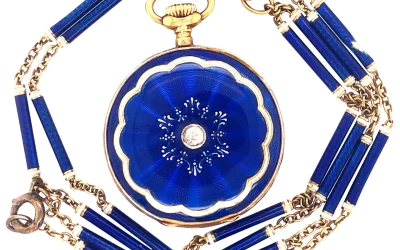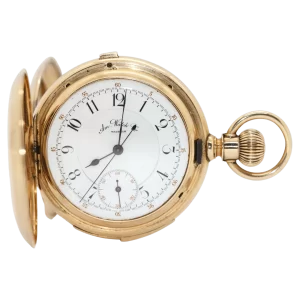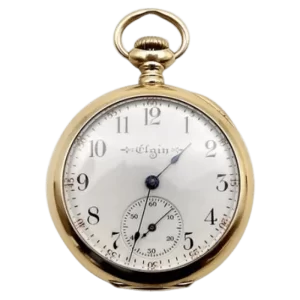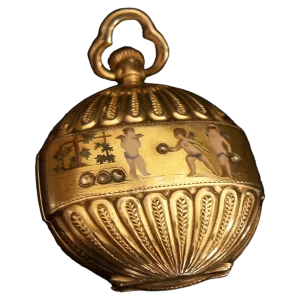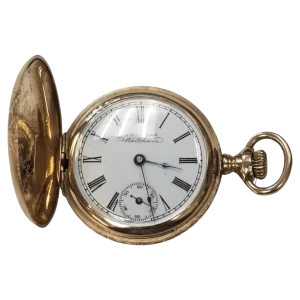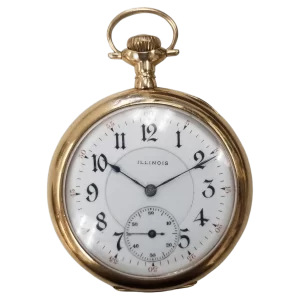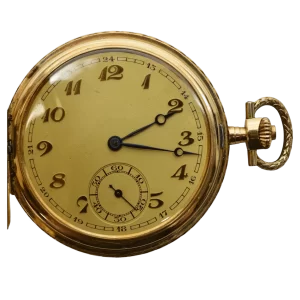Although silver isn’t nearly as valuable as gold, it’s still nice to know if your watch is in a silver case or just a silver-colored case. Watch cases made in Europe were often stamped with hallmarks to guarantee that they were silver, but this was not the case [no pun intended] in the U.S. And to make matters worse, not only were there a number of types of silver, some companies actually made up misleading names for their non silver cases. Again, the only way to be absolutely sure is to take your watch to a competent and reputable jeweler and have it tested, but many watch cases are marked in such a way that you can usually figure it out if you know what to look for. Here are some pointers:
If the case has a decimal number on it, such as “0.800,” “0.925” or “0.935,” it is probably silver. These numbers represent the purity of the silver, with “1” being pure silver.
If the case is marked “Sterling,” this indicates that it is high grade silver [at least 0.925 pure].
“Fine silver” usually refers to 0.995 pure silver.
If the case is marked “Coin Silver” it is still real silver, but of a lesser grade than sterling. In Europe, “coin silver” usually meant 0.800 pure, whereas in the U.S. it generally meant 0.900 pure.
The following are trade names for silver colored alloys which do not actually contain any silver: “Silveroid,” “Silverine,” “Silveride,” “Nickel Silver” and “Oresilver” [these last two are particularly sneaky, since they sound like they are a silver alloy of some sort or simply low grade silver]. Also, beware of cases marked “Alaskan Silver,” “German Silver,” etc.




